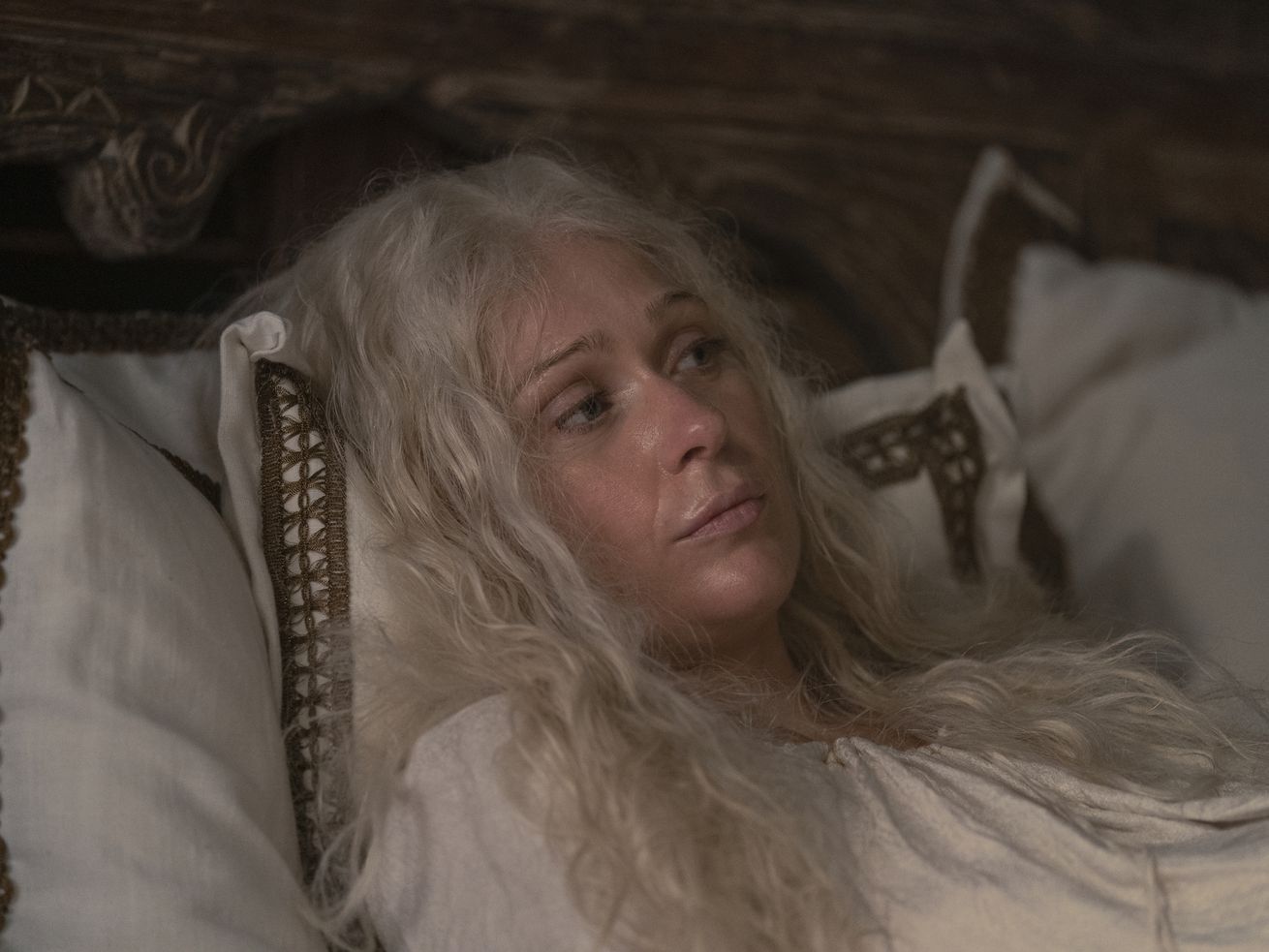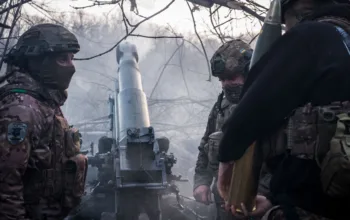The Game of Thrones prequel shows patriarchy at its most dehumanizing — but in a post-Roe world, it was effective.
The creators of House of the Dragon, HBO’s highly anticipated new Game of Thrones prequel, raised plenty of eyebrows and sowed plenty of confusion when they tried to prepare viewers for how the show would deal with, well, women.
In an interview in July with the Hollywood Reporter, showrunners Ryan Condal and Miguel Sapochnik warned that while the show would step back from the graphic onscreen depictions of rape that frequently alienated many fans of its predecessor, it would continue to depict other forms of brutalization against women. In particular, Sapochnik mentioned, childbirth and its inherent brutality would be a major focus of the show’s first season.
“In medieval times, giving birth was violence,” Sapochnik stated. “You can’t ignore the violence that was perpetrated on women by men in that time. It shouldn’t be downplayed and it shouldn’t be glorified.”
Note: This article contains spoilers for House of the Dragon’s first episode.
In retrospect, it might sound as if Sapochnik were thinking of a particular childbirth scene that would prompt shock and controversy. That’s because the first episode, “Heirs of the Dragon,” which premiered Sunday night, prominently features what may be the most graphic and brutal childbirth scene in recent television memory.
The episode’s climax, which sees a king making a terrible decision that leads to his wife bleeding out during childbirth, may strike some viewers as unnecessarily sadistic. That is, after all, entirely in keeping with Game of Thrones’ reputation. And it’s true — it’s not an easy scene to watch, even if you’re not particularly squeamish.
But thematically, the childbirth scene sets up two of the major themes of House of the Dragon (HotD) — one being King Viserys (Paddy Considine)’s desperation for a male heir and the pressure riding on him to secure the line of succession for House Targaryen. (If you want to know more about the direction this show will be headed, you can read all about that in our spoilery overview of the troubled Targaryen family dynasty.)
The other, larger theme feels especially resonant in modern American life. The show wants us to understand that this is a world where women’s choices and even their bodily autonomy are severely limited. It’s a world that has abruptly become identical to ours in one respect: in post-Roe America, the state can now prioritize the life of the unborn child over the life of the mother.
On social media, debate arose about whether this episode’s brutalization of women was gratuitous — an expected discourse, with the longstanding criticism that Game of Thrones was needlessly misogynistic. But given that state-sanctioned misogyny continues to exist and impact the way women are treated in the real world, we continue to need art that reflects and critiques that misogyny with a degree of realism — and yes, that critique of real-world politics can happen even in a fantasy show full of dragons. House of the Dragon’s first episode gives us a discomfiting, graphic look at what such a critique might now look like.
Spoiler alert: It’s not pretty.
House of the Dragon’s patriarchal violence doesn’t happen in a vacuum
After Sapochnik’s comments to THR raised alarm from fans, the creative team attempted to walk back his statements a bit. Speaking to Vanity Fair a few weeks later, producer and writer Sara Hess further clarified that none of the show’s depictions of violence against women would include “sexualized violence.” She elaborated that instead, “we choose to focus on the violence against women that is inherent in a patriarchal system … our female leads in the first half of the show are coerced and manipulated into doing the will of adult men.”
Hess’s description applies primarily to the show’s two main characters — King Viserys’s young daughter Rhaenyra (Milly Alcock) and her best friend Alicent (Emily Carey), daughter of the King’s right-hand man Otto Hightower (Rhys Ifans). But we soon see that these women’s fates are each entirely determined by what happens to Rhaenyra’s mother, Aemma (Sian Brooke) in the first episode. As the wife of King Viserys, Aemma is under intense pressure, from both the king and his court, to deliver a boy. Although Rhaenyra is clever, strong, and more than capable of stepping up as her father’s heir, the rules of succession don’t allow women to take the throne.
The king’s cousin, Rhaenys (Eve Best), found this out the hard way when the council to choose the next ruler elected not to break with tradition, and so passed over her in favor of Viserys despite her equal claim as heir. However, this traditionalism puts even more pressure on Viserys to continue the unbroken Targaryen dynasty through his sons. In other words, if the episode’s title didn’t already tip you off, this season is very much Succession with dragons.
Unfortunately, Aemma’s multiple pregnancies have ended in miscarriages or the premature deaths of her children, with Rhaenyra her only surviving heir. In the first episode of HotD, she’s pregnant again — and Viserys, to the point of foolishness, is convinced her next child will be a son.
Turns out, he’s right. But when Aemma’s birth becomes difficult, his desperate desire leads him to do something we rarely see when narratives of childbirth are depicted: He prioritizes his unborn child’s life over the life of his wife. Without telling Aemma what’s happening, let alone giving her a choice about whether she lives or dies, Viserys authorizes the attending physicians to essentially give her a medieval C-section — knowing it will most likely kill her.
This is an especially barbaric choice given that it might not even strictly be necessary. Aemma’s birth is complicated, but so far it’s not yet life-threatening. Her physician, asking Aemma’s husband to make decisions about Aemma’s health, a recurring theme still today, tells Viserys they can act now to “sacrifice one or lose them both,” or leave the fate of mother and child up to the gods.
As the king is deciding to murder her, Aemma is resting peacefully. Left to deliver her baby naturally, the implication seems to be that she might still be able to deliver a healthy son, and that one or both — or neither — could survive the ordeal. But that’s a risk too high for the king; he decides to gamble on cutting open Aemma’s womb in order to deliver the baby faster. This dismissal of a woman’s right to weigh in on her own medical treatment still happens to thousands of women today.
This decision plays out as pure horror, typical of the gruesomeness we’ve come to expect from this franchise. Aemma, unable to fight back, is held down and sliced apart while screaming in agony and terror, begging for her life. The show makes it extremely clear that Aemma does not want to sacrifice her own life for the unborn child who may or may not even be breathing. She wants to live; she’s not given a choice. Ultimately it’s all for naught; her son is delivered, but dies soon after his mother.
Usually this fictional trope sees the father begging the doctor to save his partner no matter what, while the woman herself begs the doctor to save her unborn child’s life before her own. Throughout history, fiction has tended to romanticize childbirth while portraying motherhood at the point of birth as inherently self-sacrificing. The mother who virtuously wishes to die in order that her child may live is portrayed as the default. In her willingness to subsume herself for the good of her child, her identity as a mother now takes precedence over her identity as a full person in her own right.
The sainted, dead mother is a bleak idealization, but the actual statistics on fatherhood also undermine the devoted father trope. The portrait of the father, desperate to prioritize his partner’s life as a good partner should, is also a fantasy. When men are faced with the reality of pregnancy and fatherhood, some tap out, distancing themselves from their partners and kids. They’re more likely to cheat as she gets further along in the pregnancy, and their pregnant partners are exponentially more likely to be murdered by them. Hardly rosy stuff, but that’s the reality: Pregnancy is long and messy and costly and unsexy and relationship-altering, and that was true before the Dobbs ruling, which will significantly impact many aspects of prenatal care as well as the whole medical system around prenatal care.
The way this reality impacts HotD’s childbirth scene presents a stark difference to Game of Thrones, which typically displayed violence against women in a vacuum. This time, however, not only are there adjacent systemic factors at work, but there are consequences: The ramifications of this one choice are about to play out in this show’s universe for years to come. It’s a brutal choice, but an unequivocally vital one, both to the plot and to our understanding of the world our main female characters have to navigate.
It feels fitting, then, that HotD opens with childbirth framed as a horror show (juxtaposed against an equally brutal and bloody jousting sequence, in case you wondered how toxic masculinity was doing.) Although unsexy childbirth is a well-established TV trope at this point, our tendency to romanticize the event and gloss over its messy, dangerous reality informs the way we view motherhood itself.
We are 11 years out from the New York Times opining that television births are too slimy and realistic, too full of “yowling and goo” and unsexy, unromanticized depictions of birth that “[result] not in cherubic babies in bonnets, but in slime-covered balls.” Times critic Neil Genzlinger feared in 2011 that such televised ugly births might put women off childbirth; perhaps he thought if TV didn’t tell women childbirth can be awful, they wouldn’t figure it out for themselves until it was too late to turn back. Thanks to the overturning of Roe, too late is earlier than ever for millions of women. For many of these women, IRL childbirth is likely to be uglier than it’s been in decades.
Enter House of the Dragon as the first major post-Roe TV series to present some kind of allegory for what just happened to women across the nation. Viserys in this scene subverts all decent notions of how a husband is supposed to feel about his own wife and what he’s supposed to want to protect. Yet Viserys isn’t just acting as a husband; here he is literally the state itself. He is the king and thus the law; his concerns are about succession, about governing and continuing the Targaryen line above all else. In the eyes of the state, Aemma is an incubator for the next Targaryen king. Viserys’s choice to kill her doesn’t even seem to do much more than lightly distress him. Why should it? The state decided long ago what role Aemma has to play. Now, the state has decided that in order to fulfill it, she must die.
As if the allegorical comparison to the state of the modern world weren’t already obvious, the attending midwives are all dressed in Targaryen red robes with white hoods, a uniform very similar to that of handmaidens. Alas, rather than feeling dystopian, this version of Westeros mostly just feels familiar — both as a return to a universe we know well and a universe that’s closer than ever to our own. It’s clear that the show intends to grapple with this dual enforced patriarchy — its own and ours — head-on.
It’s not necessarily good television — Game of Thrones was always worst at its most nihilistic — but in a way it’s satisfyingly vicious in its brutality. This is what a large sector of the country wanted; this is what the state forcing women to give birth looks like. May you relish it. And get ready for more; this is, after all, only the beginning.
Author: Aja Romano
Read More



